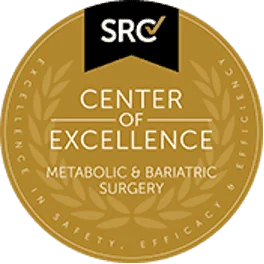Most cases of Cholecystitis are caused from gallstones. Gallstones are crystalline structures in the gallbladder or the bile ducts, usually ranging in size from a grain of sand to 3-4 centimetres. When gallstones are present, they can interfere with the normal flow of bile leading to gallbladder inflammation
Rarely, cholecystitis occurs without the presence of gallstones. This type of acute cholecystitis is referred to as acalculous cholecystitis. It is a more serious form of cholecystitis and tends to occur after injury to the gallbladder from surgery, prolonged fasting, critical illnesses, or when a problem with the immune system occurs.
Symptoms
Symptoms vary but will often occur after eating fatty meals and may occur during the night, suddenly awakening the patient. Common complaints include:
- Colic pain that comes and goes
- Steady pain in the upper right of the abdomen that increases rapidly and lasts from 30 minutes to several hours
- Pain in the back between the shoulder blades
- Pain under the right shoulder
- Abdominal tenderness
- Nausea or vomiting
- Indigestion, flatulence and belching
- Chills
- Low grade fever
- Abdominal bloating
- Recurring intolerance of fatty foods
Causes of Cholecystitis
The majority of cases of Cholecystitis are caused by gallstones. Other less common causes can include:
- Trauma to the gallbladder: Injury to the gallbladder can occur from abdominal surgery or from an abdominal injury, such as in sports or an automobile accident.
- Infection: If bile from the liver becomes infected, it can cause gallbladder inflammation.
- Tumour: If a tumour is present and blocking the flow of bile, the bile can build up causing Cholecystitis.
Risk Factors
A risk factor is something that increases your chance of developing a condition or disease.
The following risk factors increase your chance of developing gallstones and therefore also increase your risk of Cholecystitis:
- Gender: Women between 20 and 60 years of age are twice as likely to develop gallstones as men.
- Age: people over 60 years old
- Ethnicity: Native Americans and Mexican Americans
- Obesity: Obesity is a major risk factor for gallstones, especially in women.
- Diet: High calorie, high fat, high cholesterol diet
- Estrogen: Excess estrogen from pregnancy, hormone replacement therapy, or birth control pills
- Cholesterol-lowering drugs
- Diabetes: People with diabetes generally have high levels of fatty acids called triglycerides which increase the risk of gallstones.
- Rapid weight loss: As the body metabolises fat during rapid weight loss, it causes the liver to secrete extra cholesterol into bile, which can cause gallstones.
- Liver Disease
- Pancreatitis
Diagnosis
Your physician will perform the following:
- Medical History
- Physical Examination
Tests your doctor may order to confirm a diagnosis of cholecystitis may include the following:
- Ultrasound: Ultrasound is a medical imaging test that utilises sound waves and their echoes to create 2 dimensional images. Ultrasound scanning is the most sensitive and specific test for gallstones. It can detect 95% of gallstones and can confirm gallstones as small as 2 mm.
- Cholescintigraphy (HIDA scan): The patient is injected with a small amount of harmless radioactive material that is absorbed by the gallbladder. X-ray images are then taken of the liver, bile ducts, gallbladder, and upper portion of the small intestine. The test is used to diagnose abnormal contraction of the gallbladder or obstruction of the bile ducts.
- Blood tests: Blood tests may be used to look for signs of infection, obstruction, pancreatitis, or jaundice.
Treatment
The most common treatment for cholecystitis is surgery called laparoscopic cholecystectomy. This is a less invasive surgery than the traditional method of a large abdominal incision to remove the gallbladder.
With the laparoscopic operation, the surgeon makes several tiny incisions in the abdomen and inserts surgical instruments and a miniature video camera into the abdomen. The camera sends a magnified image from inside the body to a video monitor, giving the surgeon a close up view of the organs and tissues. Laparoscopic surgery leads to fewer complications, such as hospital-related infections, and has a shorter recovery time.
If tests show the gallbladder has severe inflammation, infection, or scarring from other operations, the surgeon may perform open surgery to remove the gallbladder. In some cases, open surgery is planned; however, sometimes these problems are discovered during the laparoscopy and the surgeon must make a larger incision converting to open surgery.
Recovery from open surgery usually requires 3 to 5 days in the hospital and several weeks at home. Open surgery is necessary for about 5 percent of gallbladder operations.
Benefits of Laparoscopy versus Traditional (Open) Surgery:
- Smaller incisions
- Minimal soft tissue trauma
- Less pain
- Faster healing time
- Less pain
- Lower infection rate
- Less scarring
- Less blood loss
- Earlier mobilisation
- Less scarring
- Usually performed as outpatient day surgery



